- Author Matthew Elmers [email protected].
- Public 2024-01-11 04:35.
- Last modified 2025-01-24 09:17.
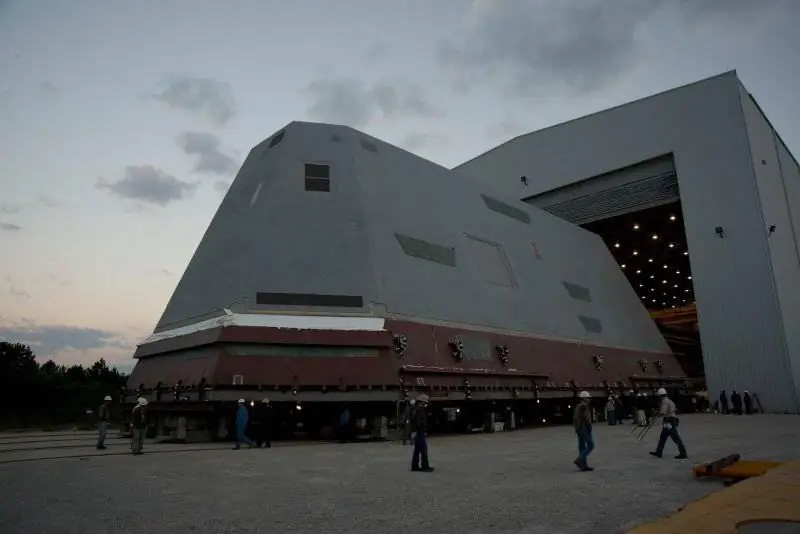
… three billion dollars! - the speaker finished his speech.
Oo! - an excited hum rolled through the hall. Military officials, industrialists and members of the public began to actively discuss something among themselves.
- Mr. Rear Admiral! - there was an exclamation from somewhere in the gallery - let me introduce myself, Johnny Cabot, Idaho Press. Tell me, is it true that our sailors shamelessly steal from the budget, thereby condemning millions of Americans to painful death from hunger?
An eyebrow twitched on the speaker's face, his face was covered with sweat - there was no desire to enter into a deliberately losing discussion with the impudent reporter. Then the press will turn his name into a laughing stock, and, goodbye, a successful career. Fortunately, there was no need to respond to the provocation - under the indignant rumble of the audience, his comrades shouted at the reporter.
- Dear colleague - suddenly stood up, flashing golden epaulettes, an elderly admiral - but what about our beautiful destroyers "Orly Burke", are they already … that?
- Admiral Davis, today there are 62 ships of this type in the ranks of the US Navy, the speaker reported cheerfully.
Oooh! - the audience buzzed with delight.
“At the moment we have an order for 9 more Orly Burke IIA destroyers, the construction of ships continues at the shipyards of our company ahead of schedule,” a representative of the Bath Iron Works shipyards entered the conversation with confidence.
- Cough, excuse me, - grumbled old Admiral Davis - is it possible somehow to install all these guns, radars, electronics in the hull of the destroyer "Orly Burke"?
“Of course you can, Admiral Davis,” the industrialist replied happily, “any whim for your money! Our company has always taken on any, even the most complex projects for our fleet. We especially respect sailors! In the case of the excellent destroyer Berk, I believe such an upgrade is possible, the weight and size characteristics of the new systems are within reasonable limits, and the modernization potential of the Berk is far from being exhausted. We can create a ship with Zamvolt capabilities at a much lower cost!"
At this time, sitting at a distance, the head of one of the technical departments opened his notebook and quickly drew …
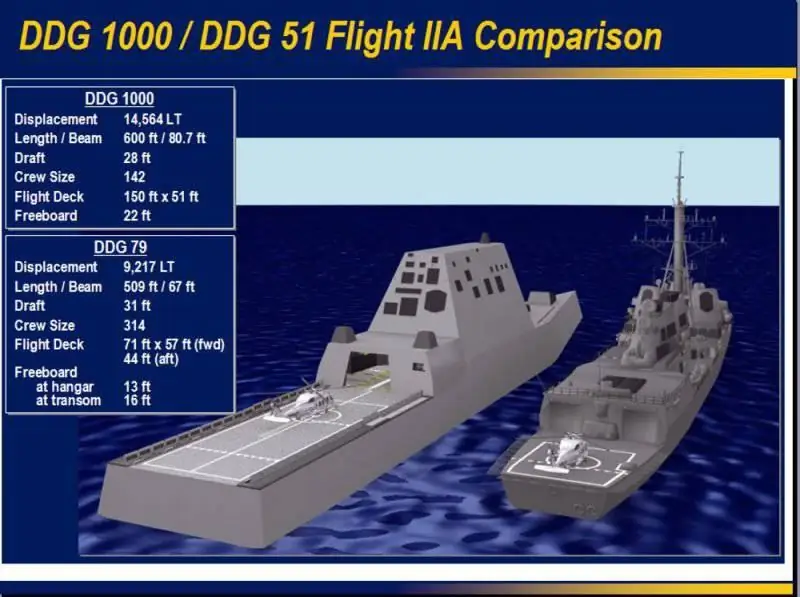
The hysteria surrounding the promising American destroyer Zamwalt has always struck me as largely unfounded. Indeed, upon closer examination, the new ship does not have any super-abilities, in comparison with the proven destroyers of the Obli Berk class (of course, this does not mean that the Zamwalt is a lousy destroyer - at the time of entry into service it will be the best ship in its class, along with the later modifications of "Berks").
Another thing is that behind the fantastic appearance of "Zamvolt" there is nothing that could really surprise the discerning audience, no electromagnetic guns or hypersonic missiles. All the "innovations" of the super destroyer are just a revival of old traditions and a deep modernization of current projects. At one time, the appearance of the Ticonderoga missile cruisers with the Aegis system and Mk.41 universal launchers could attract much more attention from everyone who is not indifferent to the topic of the Navy, the Ticonderoga was a truly "breakthrough" ship with unique weapon control systems.
The first advantage of Zamvolt is its multifunctional radar AN / SPY-3 … For the first time, a US warship will be equipped with a radar with an active phased array - six flat phased arrays, providing a three-dimensional view of the air and surface situation in the azimuth range of 360 ° around the destroyer.
In addition to viewing, tracking and target recognition functions, the AN / SPY-3 active phased arrays are designed for direct control of the ship's weapons: programming the autopilots of missile systems, target illumination for semi-active homing heads of Standard-2 and ESSM anti-aircraft missiles, and artillery fire control.

The small electronic miracle is also capable of performing the functions of a navigation radar, automatically scanning the sea surface in search of floating mines and submarine periscopes, conducting counter-battery warfare and electronic reconnaissance.
One multifunctional AN / SPY-3 radar will be able to replace several types of radars used today on US Navy ships, including:
- Aegis system AN / SPY-1 airborne illumination radar, - radar target illumination AN / SPG-62, - navigation radar AN / SPS-67, - AN / SPQ-9 artillery fire control radar.
But what is behind all this demagogy? What is the main advantage of an active phased array?
Most modern air defense systems (S-300, S-400, Patriot, shipboard "Standard") are equipped with missiles with a semi-active homing head. Simply put, it is not enough to detect an air target; it must be taken for escort and constantly "highlighted" with a special radar. Only in this case the missile seeker will catch the "ray" reflected from the target and will accurately lead the missile to the target.
It all comes down to number of radar illumination: a warship can detect hundreds of aerial targets, but is capable of simultaneously firing at only a few of them - no more than the number of illumination radars on board. This is a sore spot.
How many "radar lights" are usually installed on warships? - you ask. It happens in different ways: the Project 1164 missile cruiser (Atlant code) carries only one radar to control the fire of the S-300F complex, the Orly Burke destroyer - three AN / SPG-62 radars, the Ticonderoga missile cruiser - four similar radars.
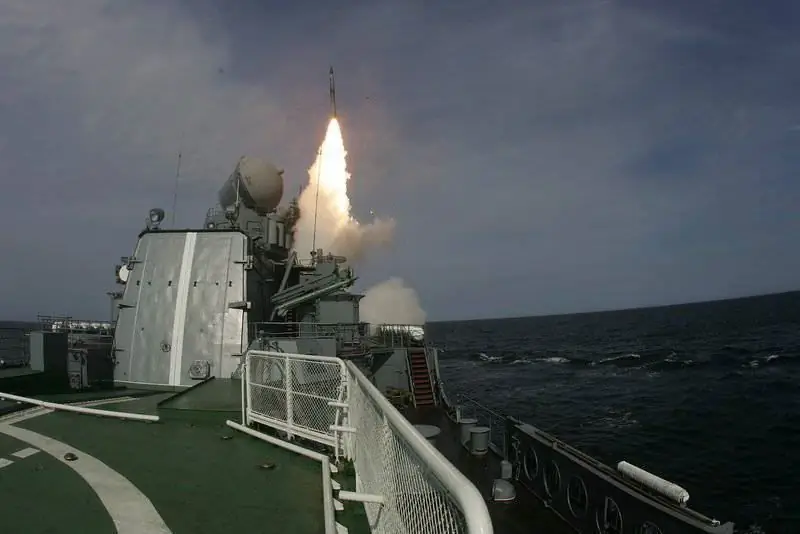
The Aegis BIUS helps American sailors a lot: in addition to monitoring the air situation, it automatically controls the number of anti-aircraft missiles fired so that at any given time there are no more than three (four) missiles on the final trajectory segment - according to the number of illuminating radars on the Orly Burke or "Ticonderoge".
Returning to the super-radar of the destroyer Zamvolt: its active phased arrays consist of thousands of radiating elements grouped into several hundred transmit-receive modules. Each such module allows you to form a narrow beam for the study of a specific quadrant of space.
Simply put, the cruiser Atlant has one target illumination radar, the destroyer Orly Burke has three, and the Zamvolt has hundreds. The new destroyer will be able to hit dozens of aircraft, cruise and ballistic missiles in the range of its weapons with anti-aircraft missiles "as from a machine gun" - the capabilities of Zamvolt's electronics are many times greater than their possible needs.
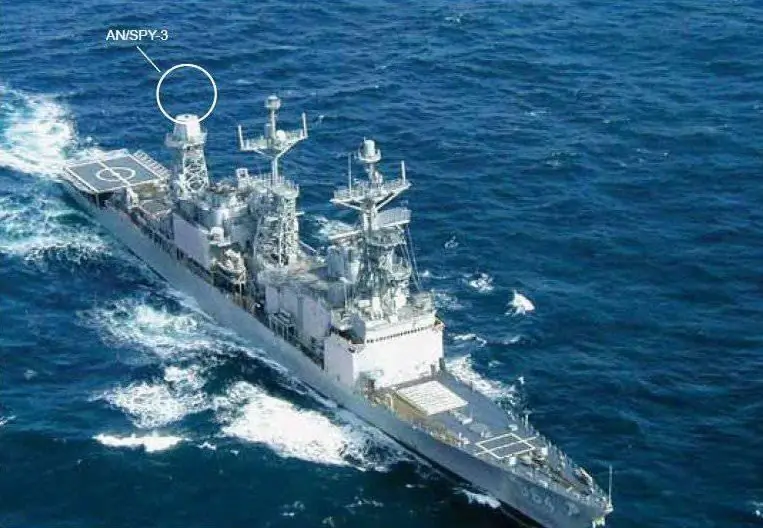
Among the other advantages of a multifunctional radar with an active phased array is reliability: if an enemy fragment "knocks out" a dozen emitters from the array, the radar will remain operational. The main and only drawback of the AN / SPY-3? Its cost.
Incredible possibilities for controlling the surrounding space, more than a thousand target illumination radars, versatility and reliability - you must agree, it sounds impressive. Alas, here I am forced to voice several "inconvenient" facts, after which the brilliance and attractiveness of "Zamvolt" will significantly fade.
First, all this has already happened. Such radars have long been used on warships - for example, the British Type 45 destroyers (the series has been under construction since 2003) are equipped with two radars with active phased arrays. Including, the multifunctional SAMPSON radar - the best shipborne radar for monitoring the air situation today. Coupled with the good location of the radar itself (on a high foremast), all this turns the Type 45 destroyers into an ideal air defense ship.
The second important point is that British scientists (without any irony!) Have once again outstripped the whole world by creating an Aster anti-aircraft missile with an active homing head: from now on, the rocket does not require an external illumination radar at all, the radio horizon problem has been partially solved. Zamvolt simply does not have anything of the kind (the American Standard-6 anti-aircraft missile with an active seeker has not been tested for many years).
Super hero needs super weapons - two automated artillery systems AGS caliber 155 mm.
Shot! Shot! … it takes six seconds to reload each gun … Shot! - in the automated cellars of "Zamvolt" 600 shells, 320 more ammunition are stored in an additional stowage. Moving along the enemy coast, the Zamvolt, invisible on the enemy's radars, will shoot port facilities, coastal cities and naval bases with impunity. The firing range of corrected ballistic projectiles or active-reactive ammunition LRLAP (literally - long-range projectile for strikes against ground targets) in practice reaches 150 km. Considering that 70% of the world's population live no further than 500 km from the sea coast, the prospects of the missile and artillery destroyer Zamvolt look more than solid …
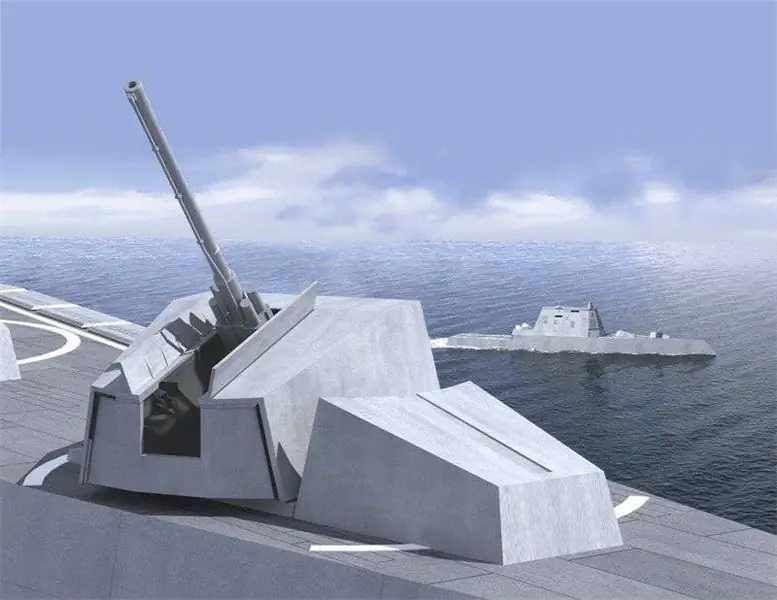
Thanks to automatic loading and water cooling of the barrels, the two AGS naval artillery mounts are equivalent in firepower to a battery of 12 land howitzers. To increase the stability of the ship during firing, some compartments may be flooded below the waterline. The ominous appearance is enhanced by the destroyer's fantastic housings, made with the stealth technology in mind.
In addition to the "main" caliber, "Zamvolts" carry "universal": two automatic cannons Mk.110 (licensed version of the Swedish installation "Bofors"): 57 mm caliber, rate of fire 240 rounds / min. There are no official comments on these systems (after all, all attention is focused on powerful AGS!), So the purpose of the Bofors on a modern warship remains unclear: clearly insufficient rate of fire to fight supersonic aircraft and cruise missiles, at the same time, a modest firing range and the low power of 57 mm ammunition does not allow you to effectively hit targets on the surface. Although quite possible "surprises" in the form of radar anti-aircraft shells and other "know-how" in the field of artillery.
Effective scattering area of "Zamvolt", when irradiated by radar, corresponds to EPR of a fishing boat … The creators did a great job on the appearance of a large 180-meter ship:
- exceptionally smooth deck without unnecessary equipment, - pyramidal superstructure made of composite materials, - parallelism of all edges and lines of the body, - an amazing "breakwater" nose, characteristic of destroyers during the Russian-Japanese war of 1905. The design allows the Zamvolt not to be understood on the crests of waves - the destroyer, according to the developers' plan, on the contrary, should hide from enemy radars in sea foam in the midst of endless wave ridges of a raging ocean.
- the final touch: the sides heaped up "inside". As a result, the radio waves are reflected into the sky, and not onto the water surface, which, under normal conditions, gives a complex interference pattern that unmasks the ship.
- the specific contours of the spacecraft help to reduce the foam trail, which, in turn, makes it difficult to visually detect the spacecraft from low earth orbit.
All this, according to the designers, made Zamvolt practically indistinguishable on the border of two environments. In principle, there is nothing original here - such "tricks" have been well known to engineers for more than half a century, and regularly appear in various combinations on warships and aircraft (the famous F-117 and SR-71, Lafayette-class frigates, coastal combat ships LCS, etc.). Achievements of the creators of "Zamvolt" are that they managed to harmoniously combine all "stealth" elements in the design of one ship. Practice will show what the result will be.
Other notable features of Zamvolt: a developed aviation group - two SH-60 anti-submarine helicopters + a certain number of unmanned rotorcraft MQ-8 Fire Scout (the composition is formed depending on the tasks assigned), coupled with a spacious hangar and a huge helipad, occupying the entire aft deck of the ship.
Advances in electronics and automation have reduced the ship's crew to 142 (for comparison, the Orly Burke's crew consists of more than 300 sailors)!
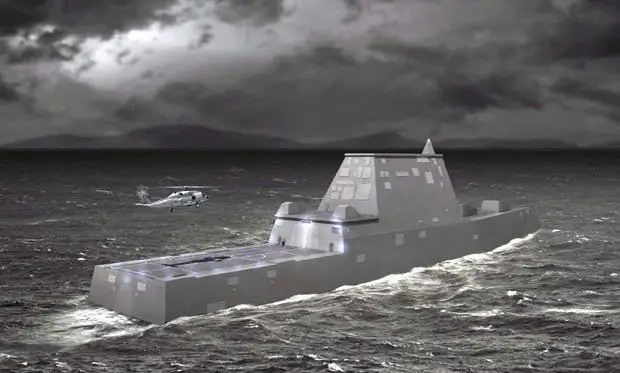
Lord of the ocean - it's useless to argue here. Zamvolt is a really cool, powerful and modern ship. But the price for all the advantages turned out to be enormous: the displacement of the Zamvolt increased by 50% compared to the destroyer Orly Burke (Orly Burke, sub-series IIA - 9500 tons, Zamvolt - more than 14 thousand tons of full displacement).
By itself, the constant growth in the size of destroyers is a common process throughout the twentieth century, it is enough to recall the tiny destroyers during the Russo-Japanese War (total displacement of 400-500 tons). The patrol ship "Burevestnik" (1970s) was twice the size of Soviet destroyers during the Second World War. And this is normal - along with the increase in displacement, the combat capabilities of ships increased many times over: modern destroyers can destroy ground targets at a distance of 2500 km and fire at satellites in low earth orbit.
However, despite the increase in size, "Zamvolt" suffered irreparable losses in missile weapons: the number of launchers decreased to 80 units, compared to destroyers of the "Orly Burke" type (96 missile silos). There are several reasons for this unfortunate fact:
- UVP Mk.57 is designed for heavier missile containers weighing up to 4 tons, - "Peripheral" launcher Mk.57 has an unusual design that makes it easier to maintain and increase the survivability of the ship. Now any fire or missile accident will not be able to detonate the entire ammunition load - the missile silos are scattered around the perimeter of the deck, outside the rugged hull of the destroyer. Outside, UVP Mk.57 are covered with armor plates. The mass of each module has increased 4 times compared to the previous Mk.41 UVP.
Alas, all these explanations do not suit the American sailors - the loss of 16 missile silos will have a significant effect on the ship's combat capabilities, and the airborne bombers located along the perimeter are even more vulnerable to enemy attacks. As they say, we wanted the best, but it turned out as always.
Resuscitation "Orly Burke"
… the modernization potential of Burk is far from being exhausted. We can create a ship with Zamvolt capabilities at a much lower cost!"
At this time, sitting at a distance, the head of one of the technical departments opened his laptop and quickly drew a rough sketch of a new modification of the Orly Burke:
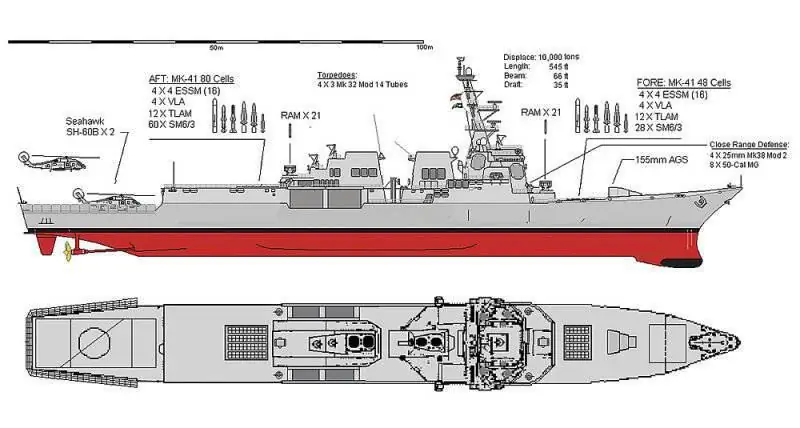
First of all, the Americans are trying to increase the number of universal launchers on the ship: on "Berk" of modification III, their number will probably increase to 128 (48 UVP in the bow and 80 UVP in the stern) - 1.5 times more than on the destroyer " Zamvolt "!
The destroyer's bow 127 mm cannon may be replaced by … that's right, the 155 mm AGS cannon mount, similar to the Zamvolt destroyer.
The famous AN / SPY-1 will be replaced by the promising AMDR radar - a dual-band radar for monitoring surface and air conditions. Initially, this system was developed as part of the CG (X) missile defense cruiser project (the project was closed in 2010), because AMDR already initially specialized in monitoring low-earth orbits.
To detect point objects in outer space, exceptional energy characteristics of the antenna are required, as a result - the AMDR radar is extremely voracious, the power consumption is 10 MW (this is 300 times more than the power consumption of the Fregat-M2 radar installed on the Peter Veliky heavy nuclear cruiser).
The installation of the new AMDR radar will require modernization of power generators and the entire electrical network of Orly Burk, in particular, increasing the voltage of the on-board network from 400 to 4000 V. There is no doubt that there will be safety and other engineering difficulties.

In the period until 2016, it is planned to build 9 Orly Burke-class destroyers of the IIA + sub-series, combining some elements of the future III series destroyer. From 2016 to 2031 inclusively, it is planned to lay down 24 Berk destroyers of sub-series III with a full set of new equipment. In the future, it is possible to develop "Burk" sub-series IV.
However, the number of American destroyers will never reach hundreds. By the end of this decade, the first "Berks", laid down in the early 90s, will become unusable and will have to be written off (sold to the allies). As for the super-destroyer Zamvolt, no more than three ships of this type will be built "as an experiment" at a price of $ 3 billion each.






